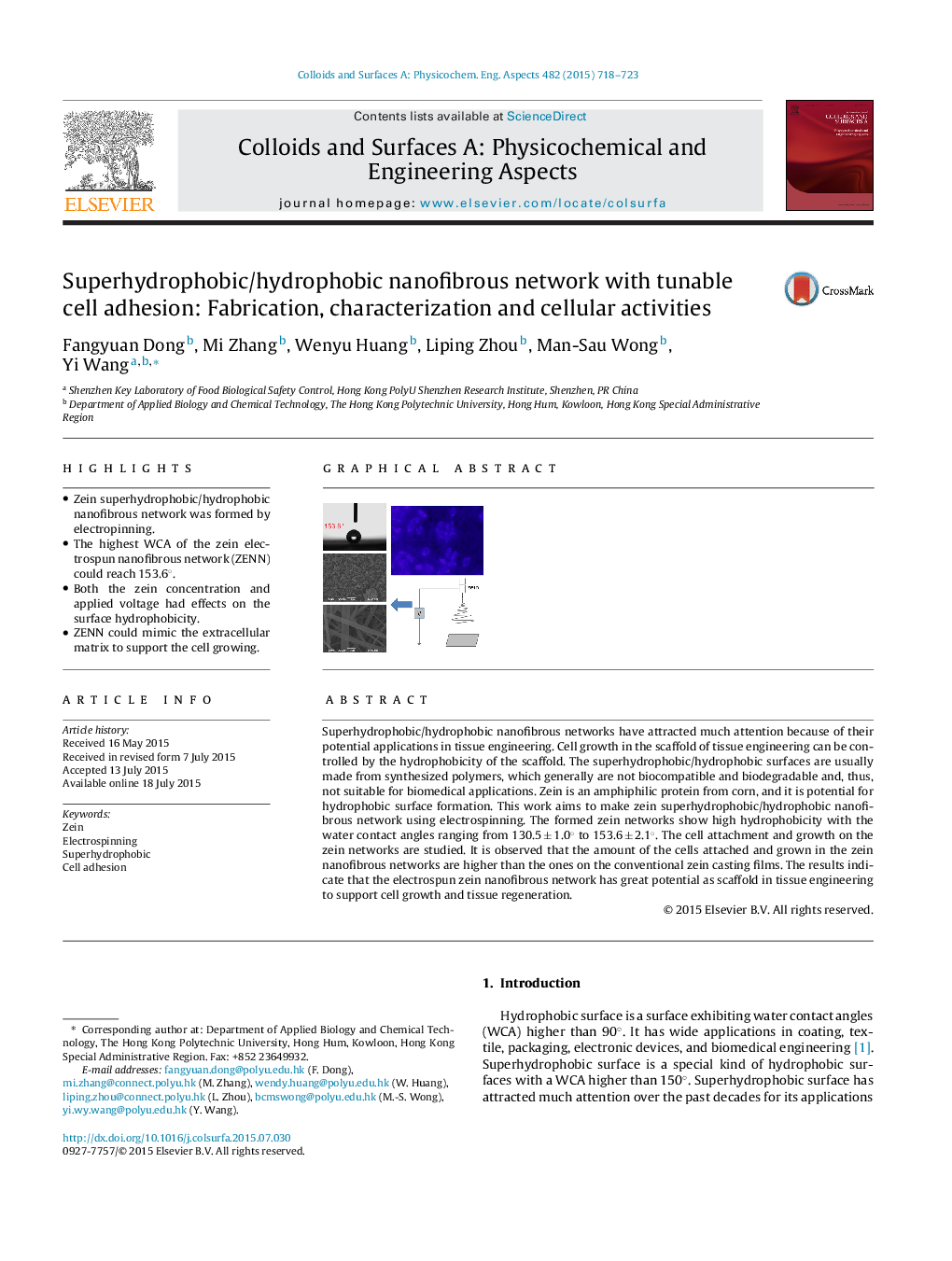| کد مقاله | کد نشریه | سال انتشار | مقاله انگلیسی | نسخه تمام متن |
|---|---|---|---|---|
| 592123 | 1453891 | 2015 | 6 صفحه PDF | دانلود رایگان |
• Zein superhydrophobic/hydrophobic nanofibrous network was formed by electropinning.
• The highest WCA of the zein electrospun nanofibrous network (ZENN) could reach 153.6°.
• Both the zein concentration and applied voltage had effects on the surface hydrophobicity.
• ZENN could mimic the extracellular matrix to support the cell growing.
Superhydrophobic/hydrophobic nanofibrous networks have attracted much attention because of their potential applications in tissue engineering. Cell growth in the scaffold of tissue engineering can be controlled by the hydrophobicity of the scaffold. The superhydrophobic/hydrophobic surfaces are usually made from synthesized polymers, which generally are not biocompatible and biodegradable and, thus, not suitable for biomedical applications. Zein is an amphiphilic protein from corn, and it is potential for hydrophobic surface formation. This work aims to make zein superhydrophobic/hydrophobic nanofibrous network using electrospinning. The formed zein networks show high hydrophobicity with the water contact angles ranging from 130.5 ± 1.0° to 153.6 ± 2.1°. The cell attachment and growth on the zein networks are studied. It is observed that the amount of the cells attached and grown in the zein nanofibrous networks are higher than the ones on the conventional zein casting films. The results indicate that the electrospun zein nanofibrous network has great potential as scaffold in tissue engineering to support cell growth and tissue regeneration.
Figure optionsDownload as PowerPoint slide
Journal: Colloids and Surfaces A: Physicochemical and Engineering Aspects - Volume 482, 5 October 2015, Pages 718–723
